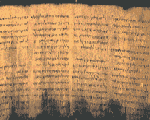




Provisions
The Wassenaar Arrangement on Export Controls for Conventional Arms and Dual-Use Goods and Technologies (Wassenaar Arrangement) contributes to regional and international security and stability by promoting transparency and greater responsibility in transfers of conventional arms and dual-use goods and technologies, thus preventing destabilizing accumulations of such items. Participating states have committed to exchange information on exports of dual-use goods and technologies to non-participating states for the purposes of enhancing transparency and assisting in developing common understandings of the risks associated with the transfers of these items.The Wassenaar Arrangement calls for member states to report twice annually on transfers of arms and specified dual-use items to non-members of the Arrangement. Required data exchanges take place in April and October, each covering the preceding six-month reporting period (January - June or July - December). Denials of attempts to obtain the specified items will also be notified within 60 days of the decision. The Arrangement defines reportable items in a munitions list and a two-tiered list of sensitive dual-use goods and technologies. Arms information, with the exception of the missile category, is provided in model and type detail. The Arrangement is not directed at any state or group of states, and as such contains no prohibitions on exports. The decision to transfer or deny transfers is the sole prerogative of the supplier state; the members do not have a veto power over other states' transfers. Members of the Wassenaar Arrangement agree to meet periodically to discuss the functioning of the Arrangement and to consult on ways to improve export control efforts and other issues relevant to the regime.
Status
Representatives of thirty-three countries gave final approval July 12-13, 1996 in Vienna, Austria to establish the Wassenaar Arrangement on Export Controls for Conventional Arms and Dual-Use Goods and Technologies. The thirty-three countries agreed to control all items in the List of Dual-Use Goods and Technologies with the objective of preventing unauthorized transfers. They further agreed on a target date of November 1, 1996, for implementation of the Wassenaar Lists.Chronology
A chronological listing of major events and developoments.Documents
Primary documents, including agreement texts and associated memoranda, statements and other related material.News
Chronological archive of news reports, factsheets, announcements, speeches and other related material.Related Web Sites
- Wassenaar Arrangement Official Homepage
- U.S. Delegation to the Wassenaar Arrangement
